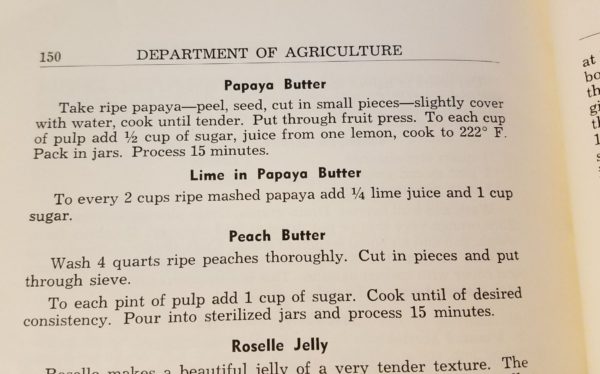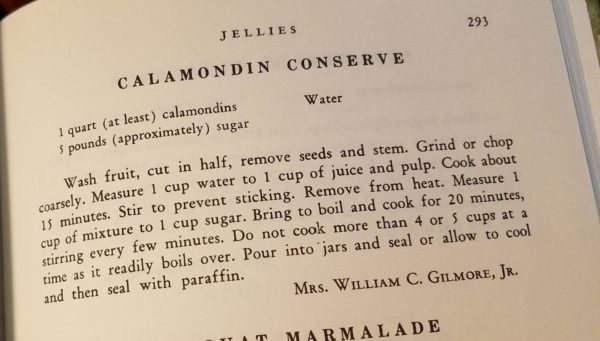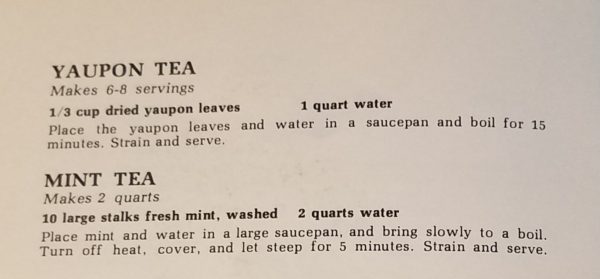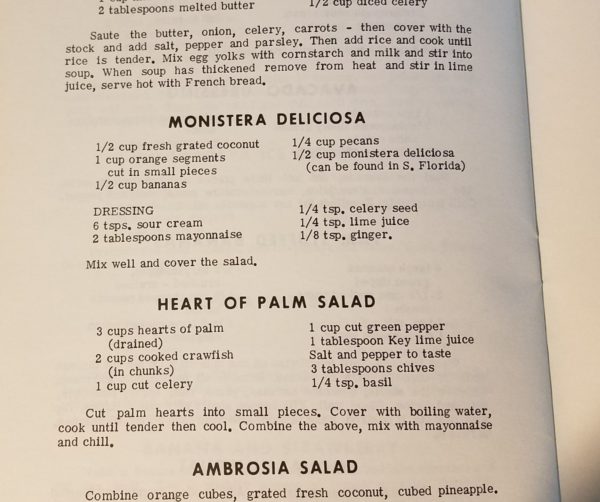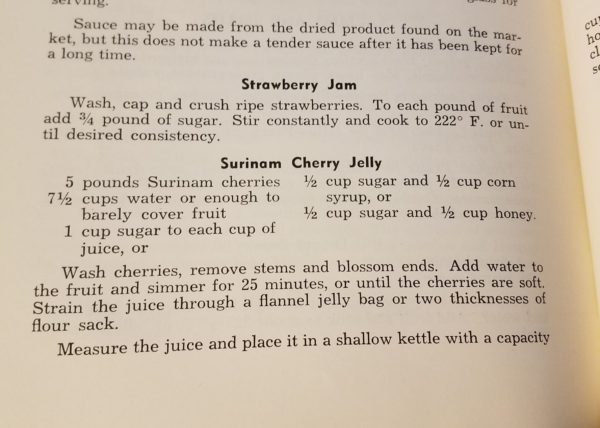I’ve become a little more regionally inclined in my recent vintage recipe book purchases and I was extremely happy to find that some of these books included recipes for materials that usually have to be grown or obtained directly from someone who grows them.




Each of the books above yielded at least one recipe that I consider more for the gardener trying to figure out what to do with their new harvest than for a cook who normally gets materials from the store.
While my calamondin tree bit the dust (I suspect greening) and my papaya is far from producing fruit, I do have a handful of established surinam cherry bushes. I am super familiar with the monstera deliciosa as a garden plant but I do not have one of those either, and I would love a yaupon holly.
However, I do have a sea grape, that I understand produces human edible fruits, and a volunteer loquat tree. I have also been following Eat the Weeds and Other Things Too, trying to figure out an offensive against some of my most pernicious garden adversaries. I will have to experiment some and see how these things can be worked into daily food.

